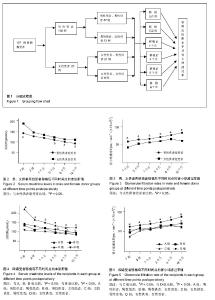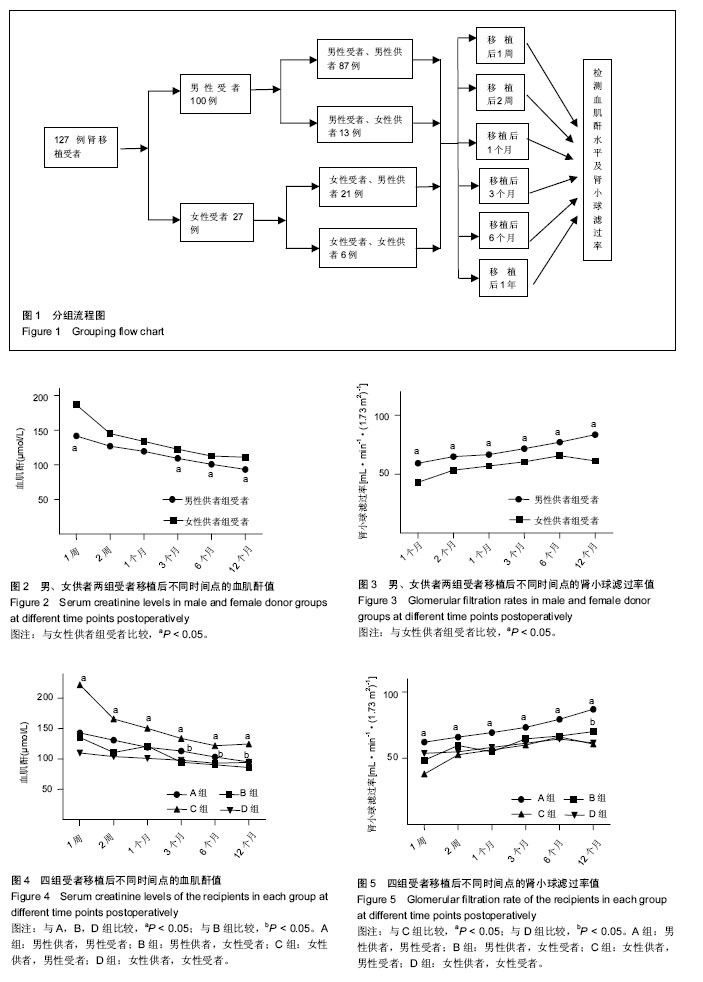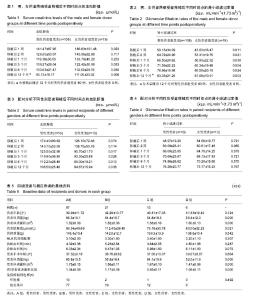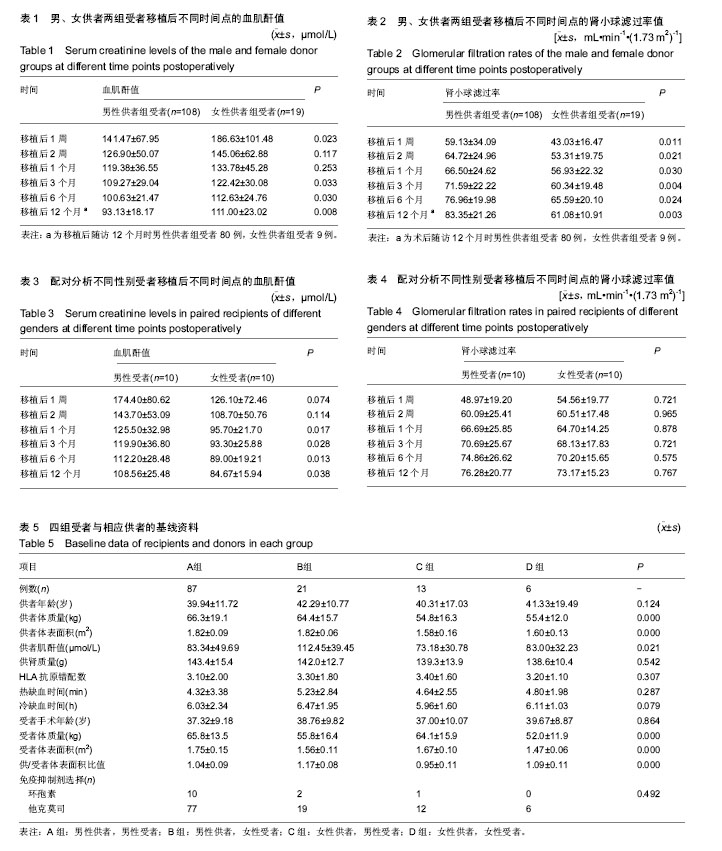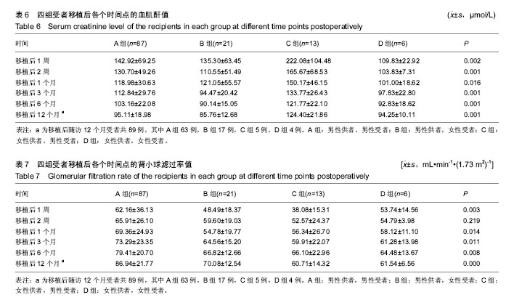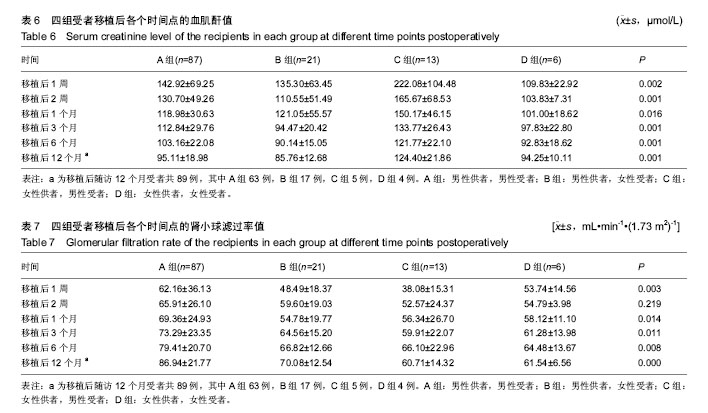| [1] 黄洁夫.我国仅1%需要者可获得器官移植机会[J].中国卫生, 2010,(9):7.[2] 李昆,钱叶勇,王振,等. 中国标准Ⅲ类心脏死亡供者肾移植21例临床分析[J].解放军医学院学报,2015,36(5):433-440.[3] 李晓伟,王亮,陈卫国,等. 心脏死亡器官捐献9例报告[J].实用医院临床杂志,2015,12(4):12-14.[4] 黄洁夫. 推动我国器官移植事业健康发展的关键性举措——心死亡器官捐献试点工作原则性思考[J].中华器官移植杂志,2011,32(1):1-4.[5] Boukobza M, Crassard I, Bousser MG, et al. MR imaging features of isolated cortical vein thrombosis: diagnosis and follow-up. AJNR Am J Neuroradiol. 2009;30(2):344-348.[6] Rhee J, Kern B, Cooper J, et al. Organ donation.Semin Liver Dis. 2009;29(1):19-39.[7] Cai M, Shi B, Qian Y, et al. Hand-assisted transperitoneal laparoscopic living donor nephrectomy. Transplant Proc. 2004;36(7):1903-1904.[8] 傅茜,王长希,曾文涛,等. 肾移植受者术前HLA特异性抗体筛查(附3500例报告)[J].中国免疫学杂志,2009,25(2):143-145.[9] 刘旭华,曲青山,陈鹏.肾移植受者术前群体反应性抗体筛查探讨[J].国际检验医学杂志,2011,32(13):1454-1455.[10] 徐恩五,于立新,曾伟生,等. 肾移植术后早期移植肾失功的危险因素分析[J].器官移植,2010,1(5):295-299.[11] 齐隽,闵志廉,朱有华,等. 影响肾移植后人、肾长期存活的因素分析[J].中华器官移植杂志,2004,25(3):148-152.[12] 丰贵文,郭涛,李金锋,等.CYP3A5 基因多态性对肾移植受者他克莫司个体化用药的指导[J].中华器官移植杂志, 2013, 34(11):647-650.[13] Mosteller RD. Simplified calculation of body-surface area. N Engl J Med. 1987;317(17):1098.[14] Levey AS, Greene T, Kusek JW, et al. A simplified equation to predict glomerular filtration rate from serum creatinine. J Am Soc Nephrol. 2000;11(Suppl 2): 155.[15] 袁小鹏,周健,陈传宝,等.心脏死亡器官捐献肾移植101例分析[J].中华移植杂志:电子版,2014,8(1):4-8.[16] 霍枫.公民心脏死亡器官捐献开启我国器官移植新时代[J].器官移植,2013,4(5): 247-249.[17] Huang JF. Constructing a national system for organ donation and transplantation. Zhonghua Wai Ke Za Zhi. 2013;51(1):1-3.[18] Sladen RN, Shonkwiler RJ. Donation after cardiocirculatory death: back to the future. Can J Anaesth. 2011;58(7):591-598.[19] Bellingham JM, Santhanakrishnan C, Neidlinger N, et al. Donation after cardiac death: a 29-year experience. Surgery. 2011;150(4):692-702.[20] Billault C, Godfroy F, Thibaut F, et al. Organ procurement from donors deceased from cardiac death: a single-center efficiency assessment. Transplant Proc. 2011;43(9):3396- 3397.[21] Kim JM, Kim SJ, Joh JW, et al. Kidney donation after cardiac death in Korea. Transplant Proc. 2011;43(5):1434-1437.[22] Moers C, Leuvenink HG, Ploeg RJ. Donation after cardiac death: evaluation of revisiting an important donor source. Nephrol Dial Transplant. 2010;25(3):666-673.[23] 项和立,薛武军,田普训,等. 公民逝世后器官捐献供者的评估与维护[J]. 中华器官移植杂志, 2014, 35(7):392-395.[24] 陈国栋,陈立中,邱江,等. 心脏死亡器官捐献供者供肾移植术后受者感染及其危险因素分析[J].中华器官移植杂志,2014,35(8): 488-491.[25] 陈国栋,袁小鹏,李军,等.心脏死亡器官捐献供肾与传统尸体供肾肾移植的疗效比较[J].中华器官移植杂志,2013,34(7):392-395.[26] Rostron AJ, Avlonitis VS, Cork DM, et al. Hemodynamic resuscitation with arginine vasopressin reduces lung injury after brain death in the transplant donor. Transplantation. 2008;85(4):597-606.[27] Snoeijs MG, Winkens B, Heemskerk MB, et al. Kidney transplantation from donors after cardiac death: a 25-year experience. Transplantation. 2010;90(10):1106-1112.[28] Perico N, Cattaneo D, Sayegh MH, et al. Delayed graft function in kidney transplantation. Lancet. 2004;364(9447): 1814-1827.[29] Tiong HY, Goldfarb DA, Kattan MW, et al. Nomograms for predicting graft function and survival in living donor kidney transplantation based on the UNOS Registry. J Urol. 2009; 181(3):1248-1255.[30] Chamorro C, Falcón JA, Michelena JC. Controversial points in organ donor management. Transplant Proc. 2009;41(8): 3473-3475.[31] Kwon OJ, Kwak JY, Kang CM. The impact of gender and age matching for long-term graft survival in living donor renal transplantation. Transplant Proc. 2005;37(2):726-728.[32] Terasaki PI, Koyama H, Cecka JM, et al. The hyperfiltration hypothesis in human renal transplantation. Transplantation. 1994;57(10):1450-1454.[33] Cullen-McEwen LA, Kett MM, Dowling J, et al. Nephron number, renal function, and arterial pressure in aged GDNF heterozygous mice. Hypertension. 2003;41(2):335-340.[34] Chertow GM, Milford EL, Mackenzie HS, et al. Antigen-independent determinants of cadaveric kidney transplant failure. JAMA. 1996;276(21):1732-1736.[35] McNamara BJ, Diouf B, Hughson MD, et al. Associations between age, body size and nephron number with individual glomerular volumes in urban West African males. Nephrol Dial Transplant. 2009;24(5):1500-1506.[36] Kasiske BL, Snyder JJ, Gilbertson D. Inadequate donor size in cadaver kidney transplantation. J Am Soc Nephrol. 2002; 13(8):2152-2159. [37] 孟凡迎,陈知水,陈孝平,等.老龄亲属活体供肾移植疗效观察[J].肾脏病与透析肾移植杂志,2009,18(4):338-342.[38] Saxena AB, Myers BD, Derby G, et al. Adaptive hyperfiltration in the aging kidney after contralateral nephrectomy. Am J Physiol Renal Physiol. 2006;291(3):F629-634.[39] Baskin-Bey ES, Kremers W, Stegall MD, et al. United Network for Organ Sharing's expanded criteria donors: is stratification useful. Clin Transplant. 2005;19(3):406-412. |
